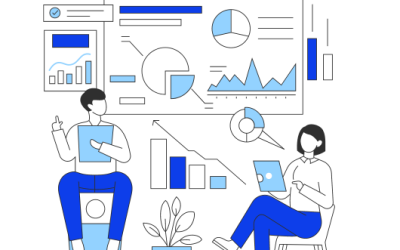What percentage of your business comes from business referrals? What if business referrals were a larger percentage of sales?
New business comes from multiple sources (i.e., clients, web, networking, and business referrers). Each source takes time, and some produce random results.
Referred Business
Referred business is a warm lead with a need and ability to pay. Referral sources become recurring sources once you perform and keep the referrer up to date.
Referral business is not random. You were chosen by the referrer and that is power. You have a leg up on the competition if there is competition!
Referral Math
Referral math illustrates the beauty of referral business. What if 5 referrers send you 2 deals per year at $10K each? That is $100,000 in new revenue. If your service is recurring annually, think about the cumulative impact over 5 years.
Building Your Referral Network
Smith, Jones, & Clark CPAs (SJC) experienced flat sales for 3 years in a row. SJC had its steady, annual business, but stopped growing. With a sales consultant’s help, they answered several questions:
- What expertise was most highly valued by clients?
- What 3rd party professionals sold to SJC’s clients?
- To whom can SJC refer clients?
Their answers were easy:
- Tax, cash, and estate planning.
- They assembled a list of 30 lawyers, financial planners, and insurance brokers.
- Each partner suggested 5 clients who needed outside support.
They chose 2 strategies to grow:
- Build SJC’s referral network.
- Touch every client twice outside of tax season.
They set goals for both and agreed to track their results. Quickly, they saw ways to help clients and build their referral network.
SJC’s Next Steps
SJC’s partners set 2 goals:
- Organize 2 referral groups in different geographic areas to generate $10K in fees per group.
- Offer tailored client tax planning based on taxes paid in the prior year.
5 partners meant 10 networking groups and 100 clients per partner. The consultant suggested a CRM to automate outreach, track actions, and manage partner tasks.
The CRM’s Role
SJC’s team used the recommended CRM to:
- Identify their highest tax paying clients for which tax planning was not provided.
- Segment their clients by service, taxes paid, and geography.
- Send educational tax emails by segment over 3 months.
- Track referrals for SJC clients in need of referrals and for inbound referrals.
With tax season over, the partners were off and running.
CRM Power
Automation, segmentation, and pipeline management make CRM’s powerful. The ability to send tailored, personal messaging, automatically, based on predesigned criteria frees you up for your highest priorities.
When you are focused on your highest priorities, you will close more sales with less follow up fatigue.
Would you like to benefit from our CRM’s Power so you can focus on your highest priorities?
Set up a Meeting so we can share ideas.





